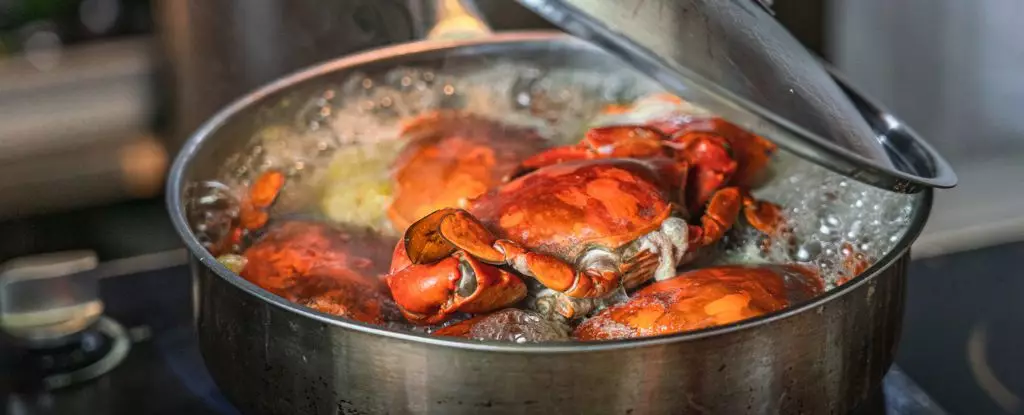When one thinks of crustaceans, images of robust exoskeletons and the ability to survive in harsh aquatic environments often come to mind. However, recent scientific revelations have begun to challenge the perception of these creatures as merely simple organisms governed by instinct. The landmark study on shore crabs (Carcinus maenas) suggests a more complex understanding of their neurological functions, especially regarding pain perception. This emerging narrative compels us to reassess how we treat these animals, particularly in our dietary practices.
The Neuroscience of Pain in Crabs
Traditionally, pain has been understood as a response developed through evolution, primarily associated with more complex mammals and vertebrates. However, the current research, utilizing methodologies akin to electroencephalograms (EEG), shows that the sensory experience of shore crabs can also manifest pain-like responses in their central nervous systems. Researchers applied a range of vinegar concentrations to crabs and monitored the electrical signals transmitted through their nervous systems. The findings indicated that these creatures not only reacted to harmful stimuli but displayed differing levels of neural activity based on the severity of the stimulus applied.
Intriguingly, the study demonstrates that crabs could distinguish between various types of harmful stimuli—mechanical versus chemical—indicating a level of cognitive processing previously thought unattainable for such animals. The brain’s response patterns reveal that in addition to simple reflexive actions, crabs can integrate complex inputs and, potentially, experience pain more profoundly than previously assumed. The implications of this discovery extend well beyond academic curiosity; they touch on ethical concerns surrounding human-animal interactions and the culinary practices involving these creatures.
As researchers unveil the layers of complexity within crustacean behavior and biology, it forces society to reconsider longstanding practices around shellfish consumption. Many seafood lovers casually toss live crabs into boiling water, often with minimal thought to the potential suffering involved. This new research suggests that such acts could inflict real pain on these animals, almost akin to the suffering that mammals experience.
The call to action from researchers emphasizes the need for more humane methods of dealing with crustaceans in culinary contexts. Zoologist Lynne Sneddon has illuminated the ethical responsibility humans bear as eaters, advocating for practices that are less likely to cause suffering. If scientific evidence supports that crustaceans are not just reflexive beings but are capable of experiencing pain, we must fundamentally alter our treatment of these animals.
Broader Implications for Animal Sentience Research
The discourse surrounding the sentience of non-mammalian species has evolved significantly with recent studies. The acknowledgment that fish, amphibians, and crustaceans can respond to nociceptive stimuli opens a Pandora’s box of ethical considerations for how we interact with various creatures. The shared evolutionary traits among these species raise questions about the universality of the pain experience across the animal kingdom.
While critical voices suggest that the responses exhibited by crustaceans could merely be reflexive, the growing body of evidence emphasizing complex nervous systems challenges that notion. This evolution in understanding not only applies to crustaceans but also to a wider range of aquatic and terrestrial species. As Eleftherios Kasiouras points out, the structure of crustacean nervous systems is similar enough that findings could generalize across related species, warranting further exploration of their pain perception abilities.
In light of these findings, future research must strive to expand our understanding of pain perception across different species. Additionally, it is imperative that the findings translate into actionable changes in how society handles crustaceans and potentially other non-Mammalian species. We must evolve our culinary practices to reflect this newfound understanding of animal sensitivity.
Moving forward, establishing humane protocols—whether through the development of less painful methods of killing or by rethinking the animals we choose to include in our diets—is essential. This will not only align our practices with ethical considerations but also honor the complexities of life forms we have too often underestimated. Through conscientious action and ongoing research, we can promote a more ethical approach to our interactions with the natural world.


Leave a Reply